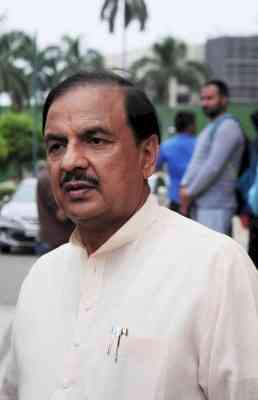Airline Industry - Promoters with Patience and Strong Credit Worthiness Required - India Ratings
Author(s): India RatingsMumbai, August 22, 2013: Airline companies operating in India require a strong, supportive promoter to improve their viability amid the challenging operating environment, says India Ratings & Research (Ind-Ra)....

Mumbai, August 22, 2013: Airline companies operating in India require a strong, supportive promoter to improve their viability amid the challenging operating environment, says India Ratings & Research (Ind-Ra). The companies are prone to becoming distressed assets due to their cost structure related inefficiencies driven by taxation and regulatory issues, high financial leverage and chronic cash flow generation issues. Globally, the airline sector is most vulnerable to cyclical demand due to capital intensity and price wars.
Ind-Ra estimates that tax on aviation turbine fuel erodes Indian airline companies’ operating margins by around 12-18 percentage points. Higher estimated maintenance cost and sundry taxes further weaken the margins. Infrastructure-related constraints make aircraft handling and scheduling inefficient. The agency estimates that the utilisation level (measured as block hours of an airline) of domestic aircrafts is 10%-15% lower than that of profitable global players. The route disbursal guidelines, some of which mandate airlines to fly on economically unviable routes, further impact the operating margins.
Domestic passenger load factor (PLF) deteriorated to 74% in 2012 from 77% in 2010. This indicates overcapacity in the airline industry, which may persist in the medium term. According to the domestic passenger data for the first five months of 2013 (5m13), passenger volumes may fall 3%-5% yoy in 2013 (2012: down 3.5% yoy). However, PLF may increase 200bp-400bp yoy in 2013 only because one major airline has stopped operations, thereby reducing the available capacity. Any profligate plans for expanding fleet size by any player may de-stabilise the sector further.
According to MoCA, traffic density (defined as 1,000 passengers/million urban capita) of India is as low as 71, which is almost a quarter of that of China and Mexico. MOCA expects domestic passengers to grow at a CAGR of 11.7% in 12th and 13th Five-Year Plan periods. The agency believes that there may be a need to moderate the growth expectations of airline companies. Given India’s income distribution, air travel may be restricted at best to the top 10% (by household income) of the households. In the relevant population, the usage of airlines in India may be quite comparable to the levels in other nations. While the market size of domestic airline industry will increase, its growth rate may be lower than usually expected.
Given the challenges in cost structure, competitive intensity and muted growth expectations in the medium term, Ind-Ra expects that a majority of domestic airlines are unlikely to enjoy investment grade ratings on a standalone profile.
(Source: Manager – Corporate Communications and Investor Relations, India Ratings & Research -A Fitch Group Company.)

 cityairnews
cityairnews 














